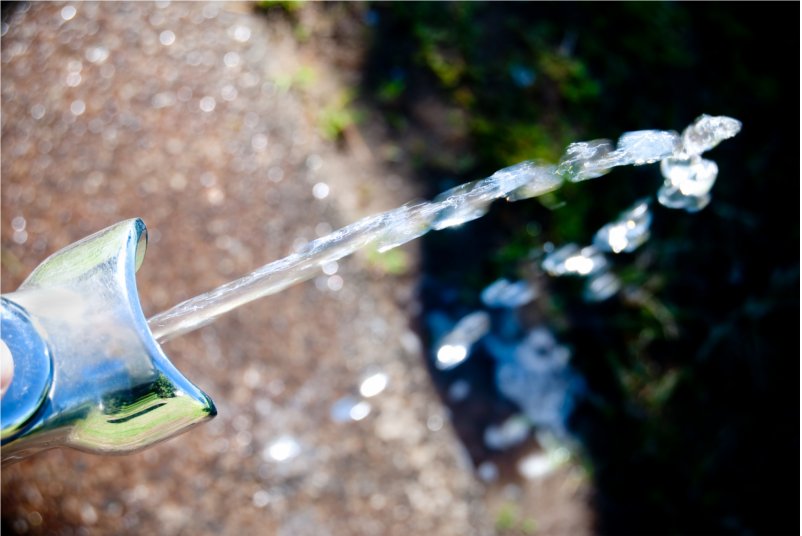Report: Drinking Water Contamination Rampant Across U.S.

According to EWG’s 2019 update, predominant chemicals included nitrates, arsenic, trihalomethanes — which includes chloroform — among other contaminants.
The EWG published drinking water contamination data for nearly 50,00 community water systems nationwide, including 468 utilities located in Maryland.
The Environmental Protection Agency (EPA) doesn’t have a tap water contamination database and doesn’t provide any information on specific contaminant levels at water systems. But according to EWG Senior Scientist David Andrews, they should. Instead, the EPA has a database listing which utilities are not following legal requirements when it comes to safe drinking water, but not the actual testing results showing chemical levels. For these compliance-based violations, the EPA assigns point values to noncompliant utilities based on the severity of the violation.
There are 38 utilities in Maryland with the highest amount of tap water violation points from the EPA. These utilities serve over 2,189,000 residents and have collectively accrued nearly 573 violation points.
Out of the 38 utilities with the highest violation points, 11 are listed as mobile home parks communities. Andrews explained that smaller water systems such as mobile home parks are more likely to have water quality violations compared to larger water systems.
“This is often due to resources in terms of source water choice, water treatment and testing,” he wrote in an email. “Big city water systems will often draw water from upstream, or a protected reservoir if available while smaller systems will get water from a nearby stream or from a well drilled directly down.”
Many large water systems, such as the city of Baltimore, draw their water from multiple sources, and people within different parts of the system may get different fractions of water from each source. Baltimore, for example, sources its water from Gunpowder Falls, North Branch Patapsco River and the Susquehanna River.
EWG tests both groundwater and surface water, and either at treatment plants after it is treated or at individual sources.
Many contaminants do not have legal limits defined by the EPA and those that do often haven’t been updated in recent years. The EWG decided to fill that gap by creating health guidelines based on the latest scientific evidence and health advisories.
High levels of total trihalomethanes (TTHMs for short), a group of contaminants that includes four different chemicals, were found in the majority of utilities in Maryland. The EWG guideline for TTHMs is 0.15 ppb (parts per billion) or less, but the highest amount found was 56.3 ppb, 375 times that guideline. TTHMs are cancer-causing contaminants that are produced during water treatment with chlorine, according to the EWG.
Out of the large utilities that had the most tap water violation points from the EPA, all of them exceeded the EWG’s TTHMs concentration guideline. Freedom District in Carroll County had the highest level of contamination at 49.3 ppb. The legal limit for TTHMs is 80 ppb.
TTHMs aren’t the only carcinogenic contaminants found among tap water in these public water systems. Nitrate, radium, chromium, cadmium and arsenic are also listed as chemicals that can lead to cancer.
Eighty-seven percent of utilities with the most tap water violations had at least one of these cancer-causing contaminants that exceeded EWG health guidelines.
Seventy-three percent of mobile park homes that had a significant amount of tap water violations had nitrate levels above the EWG health guideline. The highest was found at Bohnak Mobile Home Park in Fruitland, Maryland at 8.9 ppm. The legal limit is 10 ppm.
The EPA has failed to update chemical guidelines in recent years, according to the EWG.
“(They have) not added a new contaminant to its list of regulated tap water contaminants in nearly 20 years,” said Andrews. “Yet science continuously advances, allowing us to understand more about how contaminants in drinking water can harm human health, even at low concentrations.”
For example, PFOA and PFOS, which are used in many consumer products such as nonstick pans and stain-repellent clothing, are a few of many contaminants that do not have a legal limit set by the EPA. According to the EWG, this contaminant group can cause cancer, hormone disruption, as well as harm to the liver, fetal growth and immune system.
“Everyone should be aware of the quality of the water they drink and how that water measures up to rigorous, health-based standards,” said Andrews.
An EPA spokesperson outlined the process for adding to the regulated contaminants list. Under the 1996 Safe Drinking Water Act, the agency is required to issue contaminant candidate lists, collect information on the occurrence of unregulated contaminants in drinking water, and make determinations on whether or not to regulate contaminants. This occurs on a five-year cycle.
“EPA reviews existing national primary drinking water regulations and, as appropriate, revises them to improve public health protection,” said the spokesperson.
Related News
From Archive

- U.S. water reuse boom to fuel $47 billion in infrastructure spending through 2035
- Major water pipe break in Puerto Rico hits over 165,000 customers
- Potomac River Tunnel project enters construction phase beneath Washington, D.C.
- U.S. Army Corps approves Enbridge's $500 million Line 5 Tunnel project
- Mexico accelerates $6.7 billion water infrastructure plan amid U.S. water disputes
- Glenfarne Alaska LNG targets late-2026 construction start for 807-mile pipeline project
- Pennsylvania American Water launches interactive map to identify, replace lead water service lines
- Trump's tariffs drive $33 million cost increase for Cincinnati sewer project
- CASE Launches New Equipment Configurator At CaseCE.com
- Utah city launches historic $70 million tunnel project using box jacking under active rail line



Comments